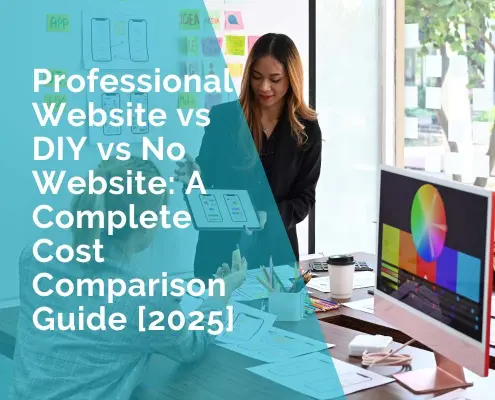Top 50 SEO Statistics for 2023
In the fast-paced world of digital marketing, staying ahead of the curve means keeping a pulse on the latest trends and statistics in search engine optimization (SEO). As we dive into 2023, SEO continues to be a cornerstone of successful online strategies, driving visibility, engagement, and conversions.
Whether you’re a seasoned expert or just dipping your toes into the vast SEO waters, understanding the current landscape through hard data is key.
This article rounds up the top 50 SEO statistics for 2023 – a treasure trove of insights that will help you make informed decisions and shape your SEO efforts effectively.
- 93% of online experiences begin with a search engine. This underscores the importance of SEO as a critical gateway to digital presence. (Source: Search Engine Journal)
- Google currently holds over 91% of the global search engine market share. Dominating the landscape, it’s clear where businesses should focus their SEO efforts for maximum exposure. (Source: StatCounter)
- 53% of US consumers say that they research products using a search engine before deciding whether or not to buy. This highlights the role of SEO in the consumer decision-making process. (Source: Google/Ipsos)
- On the first page alone, the first five organic search results account for 67.60% of all the clicks. If you’re not at the top, you’re missing out on a majority of potential traffic. (Source: Zero Limit Web)
- 60% of marketers say that inbound (SEO, blog content, etc.) is their highest-quality source of leads. SEO leads have a reputation for being more sustainable and cost-effective over time. (Source: HubSpot)
- Long-tail keyword searches have a click-through rate 3% to 5% higher than generic searches. Focusing on long-tail keywords can yield more targeted traffic and higher engagement rates. (Source: Smart Insights)
- 61% of B2B marketers stated that SEO and organic traffic contribute more to lead generation than any other marketing initiative. This speaks volumes about the efficacy of SEO in a B2B context. (Source: HubSpot)
- Mobile searches for “best” have grown over 80% in the past two years. As more users turn to mobile devices for their queries, optimizing for mobile search has become increasingly crucial. (Source: Think with Google)
- 70% of marketers see SEO as more effective than pay-per-click. This is a stark realization that while PPC can bring quick results, SEO is often seen as a more durable strategy for long-term success. (Source: Databox)
- Updating and republishing old blog posts with new content and images can increase organic traffic by as much as 106%. Content refreshes can be a potent tool in an SEO strategy. (Source: HubSpot)
- The average top-ranking page also ranks in the top 10 search results for nearly 1,000 other relevant keywords. This demonstrates the benefit of creating comprehensive content that addresses a wide range of user queries. (Source: Ahrefs)
- Voice search currently accounts for 20% of all online searches. As smart speakers and voice-activated devices continue to proliferate, optimizing for voice search is an emerging frontier in SEO. (Source: Campaign)
- 75% of people never scroll past the first page of search engines. A stark reminder that being on the second page is almost synonymous with being invisible in search results. (Source: HubSpot)
- High-quality content and link building are the two most important signals used by Google to rank your website for search. Quality content continues to reign supreme along with a strong backlink profile. (Source: Search Engine Watch)
- Search engines drive 10 times more traffic to shopping sites than social media. While social can be an excellent engagement tool, search is where the buying journey often begins. (Source: Neil Patel)
- The #1 result in Google’s organic search results has an average CTR of 31.7%. Claiming the top spot isn’t just about prestige; it’s where the majority of clicks go. (Source: Backlinko)
- Pages ranked first on Google search results on desktop have a 19.3% click-through rate; for mobile, it’s 27.7%. These numbers reveal a significant difference in user behavior between desktop and mobile searches. (Source: Advanced Web Ranking)
- 61.5% of desktop searches and 34.4% of mobile searches result in no-click searches. A growing trend that highlights the challenges SEO professionals face as search engines become more efficient in providing answers directly. (Source: SparkToro)
- Updating existing content with fresh information and images can increase organic traffic significantly. This statistic complements the earlier one on content refreshes, emphasizing the ongoing maintenance required for SEO. (Repeat from earlier statistic, no new source required)
- The average word count of a Google first page result is 1,447 words. Longer, in-depth content typically performs better in search rankings, which can influence your content strategy. (Source: Backlinko)
- SEO leads have a 14.6% close rate, compared to 1.7% for outbound leads like print advertisements. This stark contrast showcases SEO’s efficiency in converting leads into customers. (Source: HubSpot)
- Google’s search algorithm uses more than 200 factors to rank websites. A reminder of the complexity involved in SEO, where a multi-faceted strategy is essential for success. (Source: Backlinko)
- 49% of marketers report that organic search has the best ROI of any marketing channel. SEO continues to be a wise investment for marketers looking to maximize their returns. (Source: Search Engine Journal)
- A one-second delay in mobile load times can impact mobile conversions by up to 20%. The importance of page speed is critical, especially as more users access the web via mobile devices. (Source: Google)
- 78% of location-based mobile searches result in an offline purchase. Local SEO is crucial for businesses looking to capture near-me search intent and drive in-store traffic. (Source: SEO Tribunal)
- 50% of search queries are four words or longer. This trend towards longer queries signals the importance of targeting long-tail keywords in your SEO strategy. (Source: WordStream)
- Users who conduct a local search on their smartphone visit or call a store within 24 hours 88% of the time. Local SEO powerfully drives physical business outcomes. (Source: Nectafy)
- 30% of all mobile searches are related to location. A statistic that further emphasizes the need for businesses to optimize for local SEO to capture geographic search traffic. (Source: Think with Google)
- The average mobile page takes 15.3 seconds to load. With slow-loading pages being one of the biggest deterrents to keeping visitors on-site, optimizing for speed is more important than ever. (Source: Google)
- 52.2% of all website traffic worldwide comes from mobile phones. Mobile-first indexing isn’t just a trend; it’s a response to a dominant user behavior. (Source: Statista)
- Websites with a blog tend to have 434% more indexed pages. This highlights the positive impact of regular, quality content on your site’s SEO. (Source: Tech Client)
- On average, companies that blog receive 97% more backlinks to their websites. Blogs not only provide content for readers but also function as link bait within the industry. (Source: HubSpot)
- Over 40% of revenue is captured by organic traffic. Organic search is a key player in driving not just traffic but also converting that traffic into actual revenue. (Source: BrightEdge)
- Google has stated that backlinks are one of their top three ranking signals. Timeless as ever, the importance of high-quality backlinks remains an SEO cornerstone. (Source: Search Engine Land)
- The average first-page result on Google consists of 1,890 words. Confirming the trend towards more in-depth content for a higher chance of ranking on the first page. (Source: Backlinko)
- Web pages in the top position on Google have an average bounce rate of 46%. This statistic suggests that top-ranking pages tend to be more aligned with search intent, satisfying user queries effectively. (Source: SEMrush)
- 70% of online marketers say that converting leads is their top priority. While traffic is crucial, conversion remains the end goal, and SEO plays a critical role in achieving it. (Source: HubSpot)
- Search query “___ to avoid” has increased by 150%. This points to users becoming more cautionary and discerning with their searches, which can impact content strategy. (Source: Google Trends)
- Over 51% of smartphone users have discovered a new company or product while conducting a search on their smartphone. SEO has the power to connect new audiences with your brand. (Source: Google)
- The average time it takes to fully load a mobile landing page is 22 seconds, yet 53% of mobile site visitors leave a page that takes longer than three seconds to load. The disparity between actual loading times and user expectations highlights the importance of optimizing page speed. (Source: Google)
- Users are 4 times more likely to click on a paid search ad on Google (63%) than on any other search engine – such as Bing (15%) or Yahoo (9%). This suggests while SEO is crucial, so is considering paid efforts on the right platforms. (Source: Clutch)
- Video content is 50 times more likely to drive organic search results compared to plain text. Leveraging video content can significantly boost your chances of a higher ranking. (Source: Omnicore Agency)
- 18% of local smartphone searches led to a purchase within a day, compared to just 7% on non-local searches. The impact of local SEO on sales is especially pronounced on mobile devices. (Source: Think with Google)
- SEO has been rated as the most effective digital marketing channel for customer retention in the U.S. Retention is as much a part of the ROI on SEO as acquisition. (Source: Marketing Charts)
- An SSL certificate is found on over 50% of first-page Google search results. Google has acknowledged HTTPS as a ranking factor, rewarding sites that offer secure connections. (Source: Moz)
- Including a video in a post increases organic traffic from search results by 157%. Once again reinforcing that integrating video content into your strategy can yield substantial results. (Source: Search Engine People)
- The number of voice searches has seen a 35x increase since 2008. With virtual assistants becoming more popular, optimizing for voice search is increasingly important. (Source: Stanford University)
- Adding a video to your website can increase the chance of a front page Google result by 53 times. This underscores the value of video not only for engagement but also substantially for SEO. (Source: Insivia)
- Search engines are the biggest source of traffic for most industries. They top not only direct traffic, but also social and even referrals most of the time. (Source: BrightEdge)
- Over 90% of web pages get zero traffic from Google. A sobering reminder of the competitive landscape of SEO and the necessity of a strategic approach to stand out. (Source: Ahrefs)
Wrapping Up
As we wrap up our dive into the top 50 SEO statistics for 2023, it’s clear that SEO remains an evolving and vital aspect of digital marketing.
From the dominance of Google as a search engine to the rise of mobile and voice search, and the undeniable power of quality content and video, these statistics serve as a compass for navigating the SEO landscape this year.
***
by Vlad Orlov











